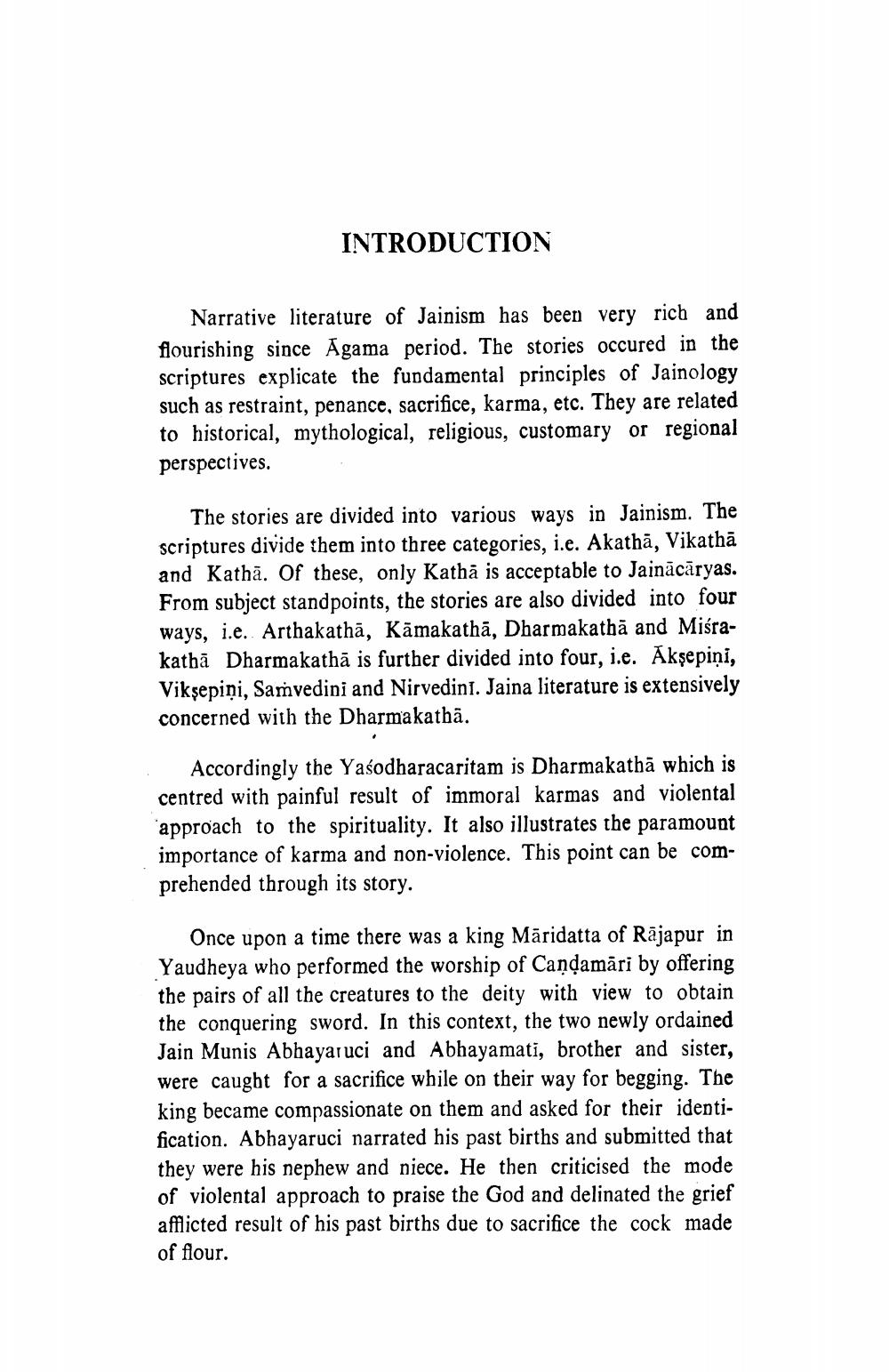________________
INTRODUCTION
Narrative literature of Jainism has been very rich and flourishing since Agama period. The stories occured in the scriptures explicate the fundamental principles of Jainology such as restraint, penance, sacrifice, karma, etc. They are related to historical, mythological, religious, customary or regional perspectives.
The stories are divided into various ways in Jainism. The scriptures divide them into three categories, i.e. Akathā, Vikathā and Kathā. Of these, only Katha is acceptable to Jainācāryas. From subject standpoints, the stories are also divided into four ways, i.e. Arthakathā, Kamakathā, Dharmakathā and Miśrakathā Dharmakathā is further divided into four, i.e. Akşepiņi, Viksepiņi, Samvedini and Nirvedini. Jaina literature is extensively concerned with the Dharmakathā.
Accordingly the Yasodharacaritam is Dharmakathā which is centred with painful result of immoral karmas and violental approach to the spirituality. It also illustrates the paramount importance of karma and non-violence. This point can be comprehended through its story.
Once upon a time there was a king Māridatta of Rājapur in Yaudheya who performed the worship of Candamāri by offering the pairs of all the creatures to the deity with view to obtain the conquering sword. In this context, the two newly ordained Jain Munis Abhayaruci and Abhayamati, brother and sister, were caught for a sacrifice while on their way for begging. The king became compassionate on them and asked for their identification. Abhayaruci narrated his past births and submitted that they were his nephew and niece. He then criticised the mode of violental approach to praise the God and delinated the grief amicted result of his past births due to sacrifice the cock made of flour.




